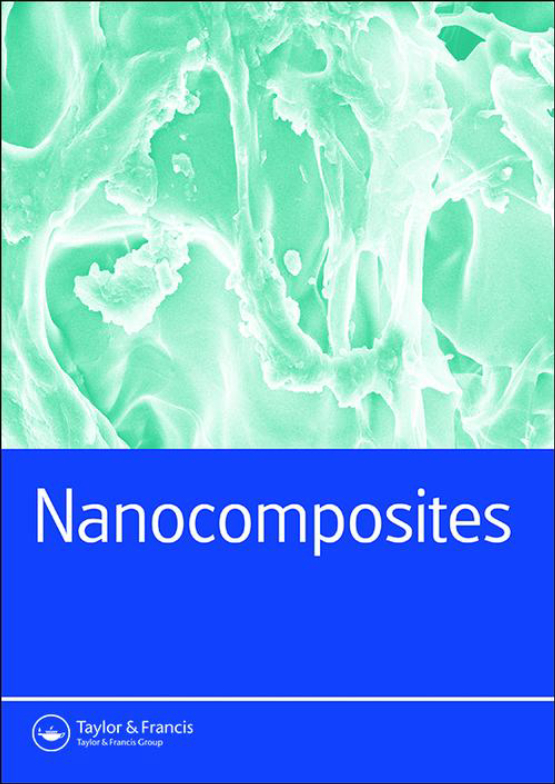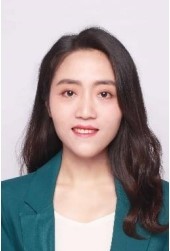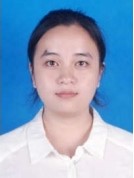Submit a Manuscript to the Journal
Nanocomposites
For an Article Collection on
Nanoengineered Materials for Enhanced Energy Storage and Electromagnetic Interference Shielding
Manuscript deadline


Article collection guest advisor(s)
Dr. Ying Li,
Chengdu University, China
liying@cdu.edu.cn
Associate Professor Xin Tian,
Sichuan University, China
tianxin.990@scu.edu.cn
Nanoengineered Materials for Enhanced Energy Storage and Electromagnetic Interference Shielding
Nanoengineering has paved the way for the creation of smart nanomaterials, which are engineered at the nanoscale to exhibit enhanced, tunable properties for specific applications. These materials not only offer remarkable performance in energy storage and electromagnetic (EM) wave absorption and shielding but also incorporate intelligent features that respond dynamically to environmental stimuli. The precision of nanoengineering allows for the design of energy storage systems with high energy density, exceptional cycle stability, and rapid charge/discharge capabilities. Simultaneously, nanoengineered materials for EM shielding and absorption, such as carbon-based nanostructures and hybrid composites, are engineered to offer optimal protection against electromagnetic interference while also adapting to changing external conditions. Moreover, the integration of smart functionalities into these nanoengineered materials, such as self-healing capabilities, tunable EM properties, and enhanced responsiveness to external triggers (e.g., temperature, pressure, or electric fields), significantly elevates their performance and application range. This collection will delve into the role of nanoengineering in developing not only efficient energy storage solutions and EM wave mitigation materials but also intelligent nanomaterials with adaptive functionalities for advanced technological applications.
The increasing demand for efficient energy storage and protection against electromagnetic interference (EMI) presents significant challenges in modern technology. Nanoengineered materials offer a transformative solution, combining enhanced performance and adaptability. These materials improve energy storage by increasing density, charge/discharge rates, and stability. In addition, nanoengineered materials are crucial for EM wave absorption and shielding, especially as emerging technologies like 5G and IoT require effective EMI mitigation. What makes these materials unique is their integration of smart features such as self-healing, responsiveness to external stimuli, and tunable properties. These capabilities not only meet technical demands but also expand their potential applications, making them essential for next-generation energy systems, electronics, and communications. The convergence of advanced nanoengineering and smart design is pivotal in developing more efficient, reliable, and adaptive technologies for the future.
This collection will explore nanoengineered materials for energy storage and electromagnetic (EM) wave absorption and shielding, with a focus on smart functionalities. Key areas include the design of nanostructured materials for enhanced energy density and charge efficiency in storage devices, and the development of materials for high-performance EMI shielding. Topics will also cover smart nanomaterials with adaptive properties, multifunctional nanocomposites combining energy storage and shielding, and innovative characterization techniques. We invite original research, reviews, and theoretical studies that advance the design and application of these materials in next-generation technologies, such as wearable electronics, electric vehicles, and communications.
All manuscripts submitted to this Article Collection will undergo a full peer-review; the Guest Advisor for this Collection will not be handling the manuscripts (unless they are an Editorial Board member).
Please review the journal scope and author submission instructions prior to submitting a manuscript.
The deadline for submitting manuscripts is 25 January 2026.
Please contact Agnes Zhou at Agnes.Zhou@taylorandfrancis.com with any queries and discount codes regarding this Article Collection.
For Taylor and Francis Journals: Please be sure to select the appropriate Article Collection from the drop-down menu in the submission system.

Dr. Ying Li earned her Ph.D. from Southwest Jiaotong University and is currently a distinguished researcher at Chengdu University. She is also a visiting scholar at the Department of Physics, Politecnico di Milano. Her research interests focus on the structural design, controlled fabrication, and functional mechanisms of nanofunctional materials.

Dr. Xin Tian earned her Ph.D. from Southwest Jiaotong University and is currently an associate professor at Sichuan University. Her research interests focus on the structural design, controlled fabrication, and functional mechanisms of nanofunctional materials, and energy materials.
Benefits of publishing open access within Taylor & Francis
Global marketing and publicity, ensuring your research reaches the people you want it to.
Article Collections bring together the latest research on hot topics from influential researchers across the globe.
Rigorous peer review for every open access article.
Rapid online publication allowing you to share your work quickly.
Submission Instructions
All manuscripts submitted to this Article Collection will undergo desk assessment and peer-review as part of our standard editorial process. Guest Advisors for this collection will not be involved in peer-reviewing manuscripts unless they are an existing member of the Editorial Board. Please review the journal Aims and Scope and author submission instructions prior to submitting a manuscript.
